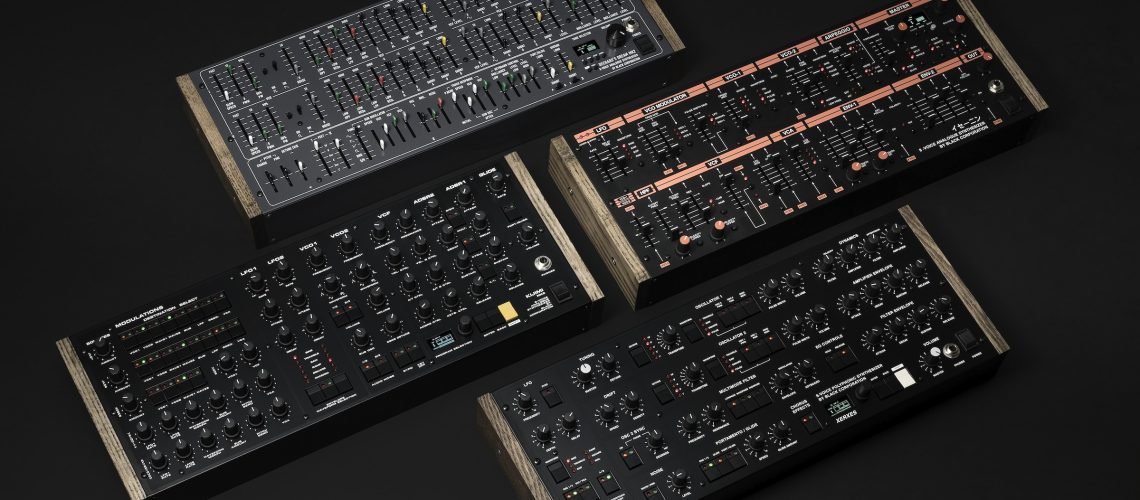The evolution of music is intertwined with the design and capabilities of instruments. After several decades of more constrained tuning and expression, new playability is becoming a norm with technologies like MPE and live per-note tuning. Music hardware maker Roman Flippov of Japan-headquartered Black Corporation joins us to connect early instruments from Buchla and Yamaha with these capabilities with modern creations.
CDM regularly invites industry leaders for their perspectives. I’ve long admired how early issues of Keyboard featured regular contributions from the likes of Bob Moog; I hope we get to continue more of that two-way conversation with industry. Black Corporation was one of a handful of makers helping drive polyphonic expression and adoption of tuning support, alongside folks like Roger Linn, Geert Bevin and Eigenlabs, Haken, Randy Jones (Madrona Labs), ROLI, Apple (Dr. Gerhard Lengeling), and Steinberg on MPE, and Khyam Allami, ODDsound, Tatsuya Takahashi (KORG), and Richard D. James on tuning. Part of what makes Roman unique is that he’s a link between the early Buchla and Yamaha instruments and modern recreations and implementations. Here are some gorgeous images of the instruments he’s built and his perspective on that journey.
Photos courtesy Roman, except the CS-80 and the Osmose. -Ed.

Early predecessors: Buchla
Tuning and per-note expression may be exotic or advanced now, after decades of being stuck on a fixed grid, but it wasn’t always so. We’ve had a drought of a few decades with more restrictive instruments. Both Buchla and Yamaha had early implementation of tuning and expressive features that remain advanced today.
I started recreating Buchla modules in 2012, incorporating accurate historical circuitry, some under the Sputnik Modular brand name. (Sputnik is now based in LA and owned by Shawn Cleary of Analogue Haven. It continues to make modules, some based on my designs and some new designs. I still sometimes assist as a consultant.) I built recreations of the Buchla modular and Buchla Music Easel with various versions of these.
More recently, working with Buchla USA, I redesigned modules for the 200 Series Classic reissue – dual oscillator model 258, quad function generator model 281, quad lowpass gate 292, source of uncertainty 266, dual voltage processor 257, triple envelope follower 258, and mixer/preamp model 207. This means I was long intimate with Buchla’s circuitry and design approach.
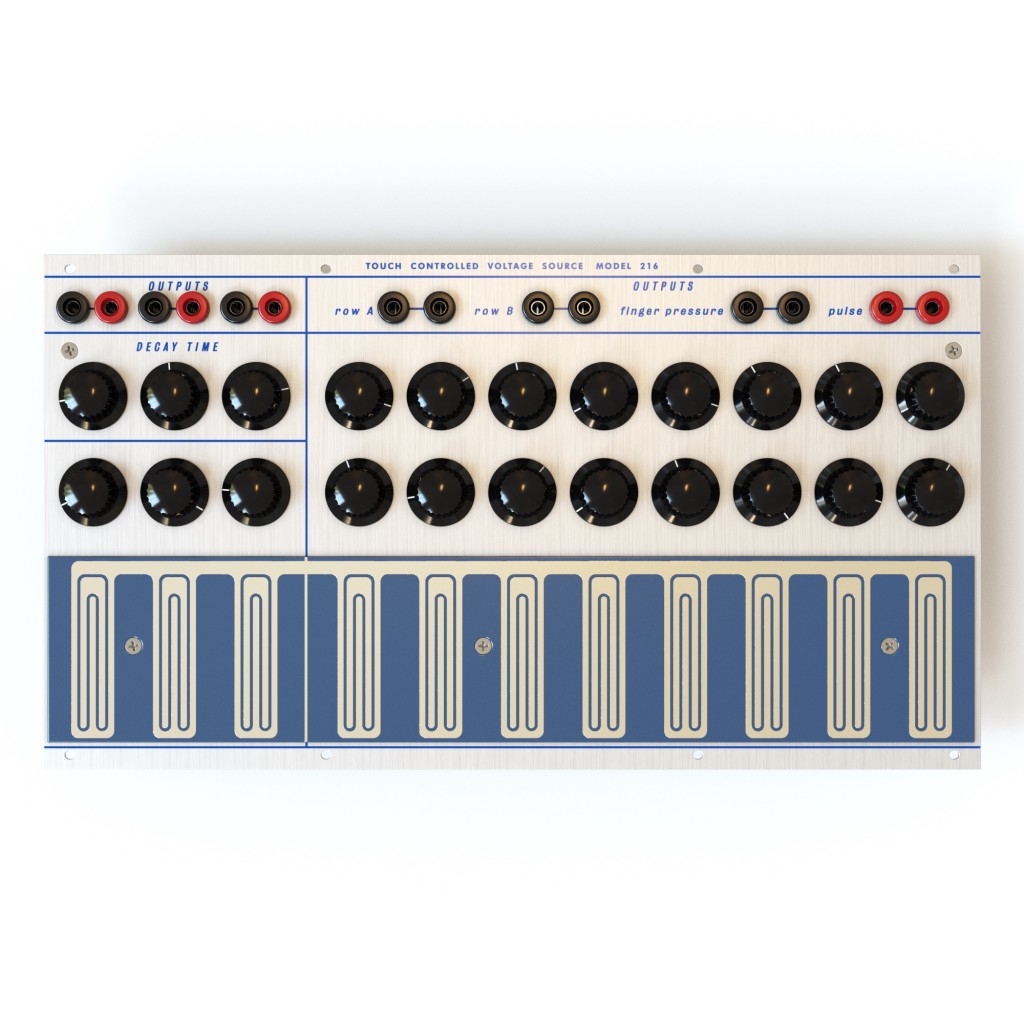
Buchla already had per-key tuning – as on the 216 (see above), or now the current 223e “multi-dimensional kinesthetic input/tactile input” controller, which provides both a tactile surface and a control module. See also Don Buchla’s original 100 series modular and 112/113 “touch-controller voltage sources.” These designs employed simple, equally spaced metal plates. Each metal plate could be tuned to any pitch tuning system, 12-tone equal tempered, Just, or entirely otherwise. Wendy Carlos tuned these to the Alpha and Beta scales, for instance. On the 100 series, these tuning knobs are obviously positioned just above each plate, meaning per-plate tuning just as you’d have on an acoustic instrument – rather than the preset equal-tempered grid we’re accustomed to now.
This openness to pitch and expression is also reflected in other modules. All of Don Buchla’s designs treat this as open voltage rather than a reproduction of a more conventional keyboard manual as on an organ.
You’ll see pressure and voltage shift options even on the simpler Model 218 touch-activated voltage source:

On the model 221 “kinesthetic input port”, there are even further controls for sensitivity, pressure, and voltage outputs:

On the model 232 frequency detector, any pitch input can act as a source of control voltage and, therefore, tuning. Morton Subotnick describes whistling into this module for the various swoops and complex pitch shapes on Silver Apples of the Moon.

The landmark Yamaha CS-80
The other high-water mark for synthesis and expression was the 1977 Yamaha CS-80. At a time when even per-key velocity sensing was far from a given, Yamaha gave their flagship per-key aftertouch (polyphonic aftertouch). The 1973 predecessor Yamaha GX-1 laid the groundwork, with onboard assignable horizontal aftertouch and polyphonic glide on a ribbon controller on the top manual. But the GX-1 instrument was enormous and expensive, so it’s best considered a concept instrument rather than a mainstream consumer product.

The CS-80 was built as a complete, from-the-ground-up polyphonic instrument with full control across voices. That includes polyphonic aftertouch and a ribbon controller for polyphonic pitch bends and glissandi.
While it’s a 1977 instrument, the rich expression and sound possibilities of the CS-80 remain desirable today. Acquiring the hardware is near-impossible – which brings us back to my part of the story.
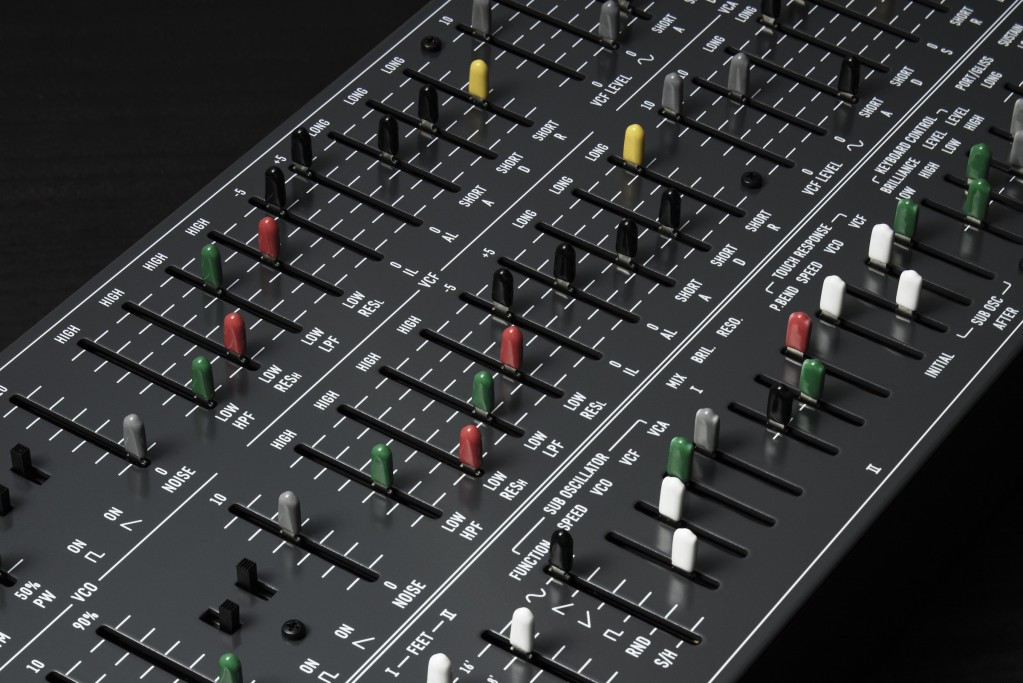
Deckard’s Dream and polyphonic expression
In 2017, I founded Black Corporation. MIDI Polyphonic Expression was there from the beginning, along with polyphonic aftertouch, providing per-note expressive possibilities. That meant that with a controller like (at the time) the Eigenlabs Eigenharp, ROLI Seaboard, Haken Continuum, or Roger Linn’s Linnstrument, you had control over additional timbral controls across voices and polyphony, just as on the original CS-80. This was a relatively new feature for hardware synth modules at the time. We helped contribute to solving some of MPE’s early chicken-and-egg problems.
Polyphonic aftertouch and MPE are compared to the more common “channel aftertouch.” Since those aftertouch messages are sent across the whole channel, any expression impacts all notes and voices at the same time. If you want to add some tremolo on the top note of a chord, for instance, you can’t do so without impacting all the other notes at once. With an instrument like Deckard’s Dream and all the timbral capabilities of its polyphonic engine, you’re missing out.
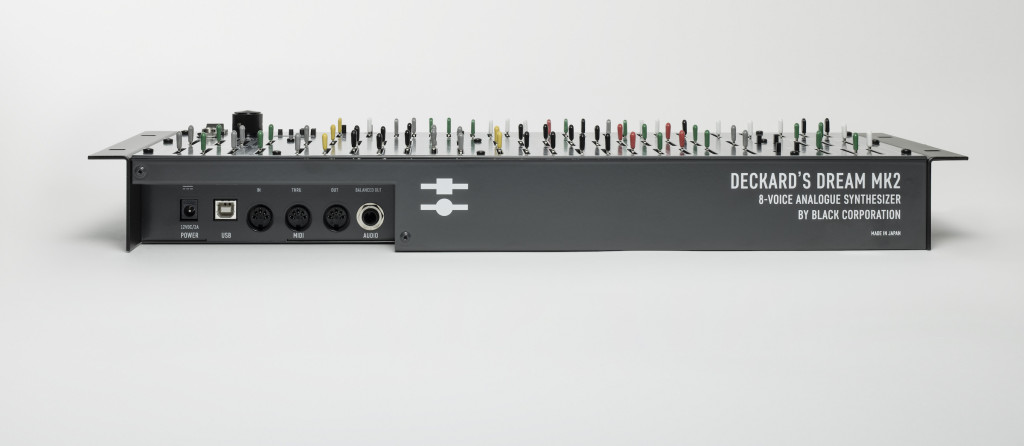
Polyphonic aftertouch and MPE are not the same thing – poly aftertouch is a basic MIDI message, and part of the original MIDI 1.0 spec but seldom implemented. MPE has the advantage of using continuous messages from the moment an input key is activated; it uses independent channels for each voice in order to send messages in parallel. The end result is approximately the same, though, with the exception that you play polyphonic aftertouch as you do channel aftertouch – pressing after the initial note, which is arguably slightly more awkward. By supporting both, we support input from a wider variety of controllers.
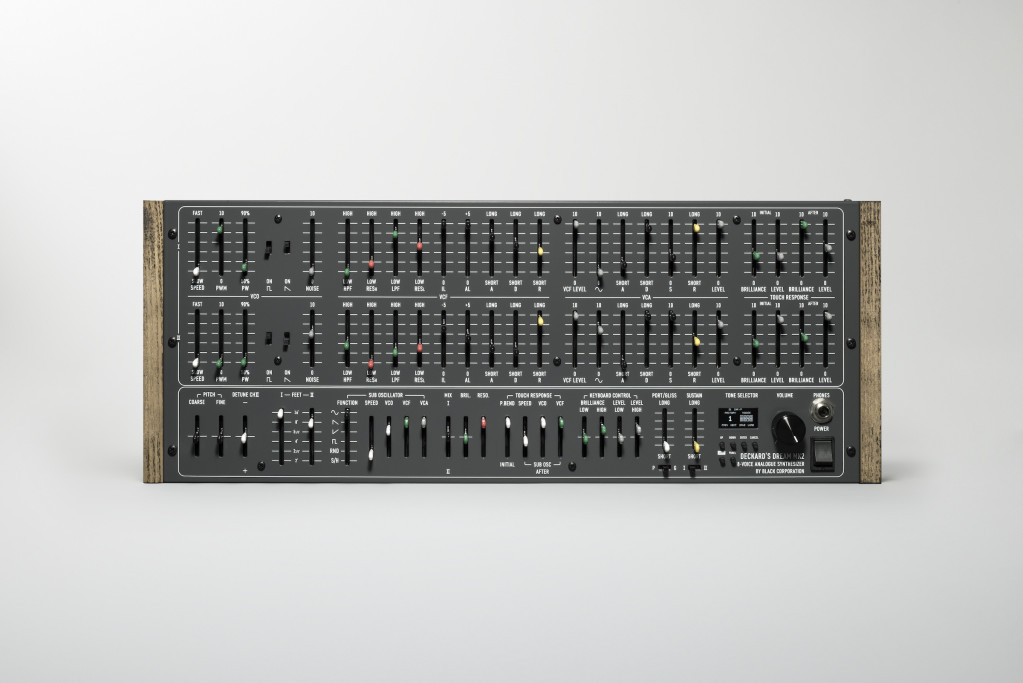
MPE and polyphonic aftertouch weren’t an afterthought or delivered in a firmware update; they were a day-one feature. In MPE mode, you can even use additional vertical control messages as well as horizontal (pitch) or pressure (z-axis) controls. Sliding up and down vertically on a controller like the Haken Continuum, you can map CC74 to a number of destinations, like LFO speed, routing of the LFO to VCO, VCA, or VCF, brilliance, and lowpass and highpass filters.
The same is true of our other polyphonic instruments; all support polyphonic expression via poly aftertouch and MPE. After the 2018 Deckard’s Dream [inspired by the CS-80] came the 8-voice 2019 Kijimi [a fresh take on the RSF Polykobol II -Ed.], the [Elka Synthex-reimagined] Xerxes and [Jupiter-inspired] ISE-NIN ( イセーニン), all with these features standard.

On the Xerxes, for instance, you have 8 voices of per-note expression and pitch, plus the ability to map any available vertical control to parameters. (Xerxes provides LFO frequency and depth, OSC2 sync, VCF frequency and resonance, and VCA. Phase shift between oscillators can also be mapped to poly aftertouch or MPE.)

Now you have a wider variety of possible controllers, too, with options like the Expressive E Osmose (MPE, pictured above), ASM Hydrasynth range (with polyphonic aftertouch), and Ableton Push 3 (MPE). The arrival of polyphonic expression on Fatar keybeds makes even more products likely soon, as evidenced by Native Instruments employing the functionality for their latest-generation Komplete Kontrol.

Tuning, microtuning, and MTS-ESP
Tuning support on synthesizers has often been limited to 12-tone equal temperament – approximately the tuning found on concert pianos, though even those instruments are tuned with subtle variations. Just as with polyphonic aftertouch, other tuning support was an early part of the MIDI specification but was rarely implemented.
Worldwide, many systems other than 12-TET are commonly used, and in synthesis, composers like Wendy Carlos have long advocated the use of other scales. [Ed.: See Wendy Carlos’ extensive article on her own site.] But only recently did these become readily available to music tech consumers. Richard D. James, aka Aphex Twin, has been a prominent advocate. 2016’s KORG Monologue, a successor to the original Minilogue designed by Chief Engineer of Analog Synthesizers Tatsuya Takahashi and his team, was built in collaboration with Richard D. James and incorporated microtuning based on his feedback. [see CDM on the Monologue launch] But the Monologue was, as the name implies, monophonic. (A later collaboration with Novation delivered the AFX Mode Bass Station for Novation, also with microtuning.)
In early 2018, we added microtuning support to Deckard’s Dream, and it’s been available on every instrument we’ve made since. Richard D. James got in touch with us with some input on how to improve the functionality. So Deckard’s Dream brought these ideas to a polyphonic instrument – coming full circle to the per-key tuning I admired on the Buchla systems.

As with polyphonic expression, tuning is a feature we support across our lineup – Deckard’s Dream, Kijimi, Xerxes, and ISE-NIN. These instruments not only support tuning tables but also allow on-instrument editing of tuning – the same way you would tune an acoustic instrument. In 2021, we followed up with support for MTS-ESP, an open specification by developer ODDSound with Richard James, which supports multiple tuning table formats and synchronizes plug-ins and hardware with one another live. [See CDM’s feature on MTS-ESP and its creators. -Ed.]

What’s next
I’m very interested to see how music will change because of MPE and microtuning. We’ve all grown accustomed to this western scale because every keyboard was made this way. Now, with the ability to change the scale and tuning, bend pitches, and add expression across multiple dimensions, the whole music industry may change.
The more odd music we hear, the less odd it begins to sound. I remember listening to Aphex Twin’s The Tuss in 2007 and how it sounded. After sixteen years of listening to that album, it doesn’t sound that way anymore. Our ears assimilate all these sounds.
This is why we build instruments with expansive capabilities; we don’t know what music it will open up. I wonder even how pop music may change. Listening to what people do with our instruments constantly surprises and inspires us. It opens up new worlds.
Roman Filippov
https://black-corporation.com/

Thanks to Roman for this report; you can check out the products at Black Corporation, and always count on CDM for more on the possibilities of tuning and expression.
